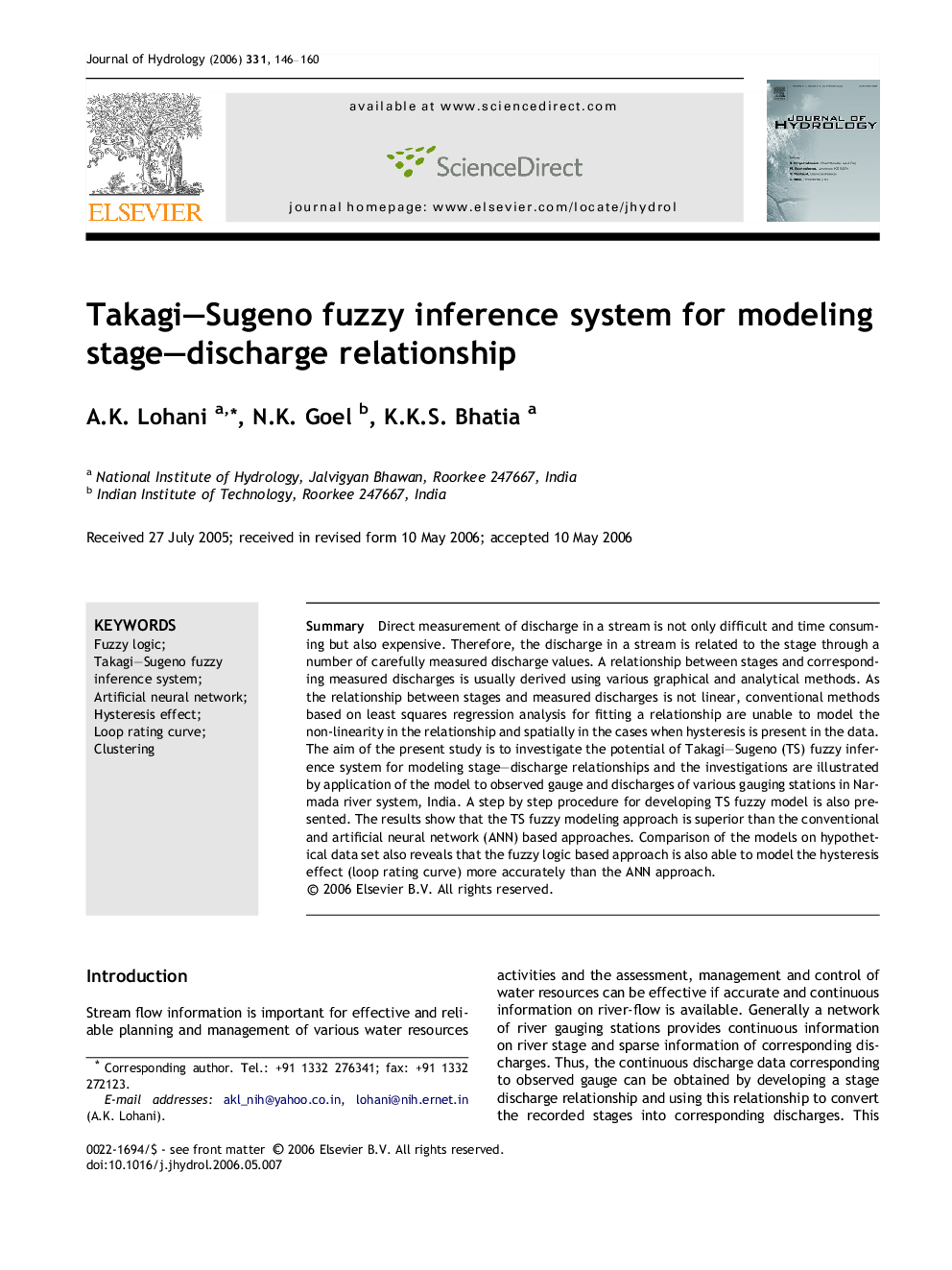| Article ID | Journal | Published Year | Pages | File Type |
|---|---|---|---|---|
| 4580355 | Journal of Hydrology | 2006 | 15 Pages |
SummaryDirect measurement of discharge in a stream is not only difficult and time consuming but also expensive. Therefore, the discharge in a stream is related to the stage through a number of carefully measured discharge values. A relationship between stages and corresponding measured discharges is usually derived using various graphical and analytical methods. As the relationship between stages and measured discharges is not linear, conventional methods based on least squares regression analysis for fitting a relationship are unable to model the non-linearity in the relationship and spatially in the cases when hysteresis is present in the data. The aim of the present study is to investigate the potential of Takagi–Sugeno (TS) fuzzy inference system for modeling stage–discharge relationships and the investigations are illustrated by application of the model to observed gauge and discharges of various gauging stations in Narmada river system, India. A step by step procedure for developing TS fuzzy model is also presented. The results show that the TS fuzzy modeling approach is superior than the conventional and artificial neural network (ANN) based approaches. Comparison of the models on hypothetical data set also reveals that the fuzzy logic based approach is also able to model the hysteresis effect (loop rating curve) more accurately than the ANN approach.
